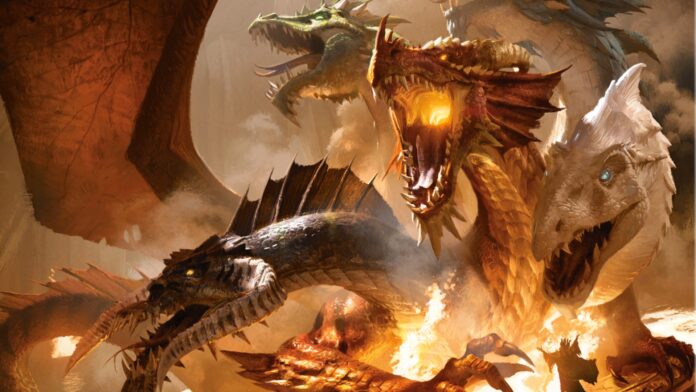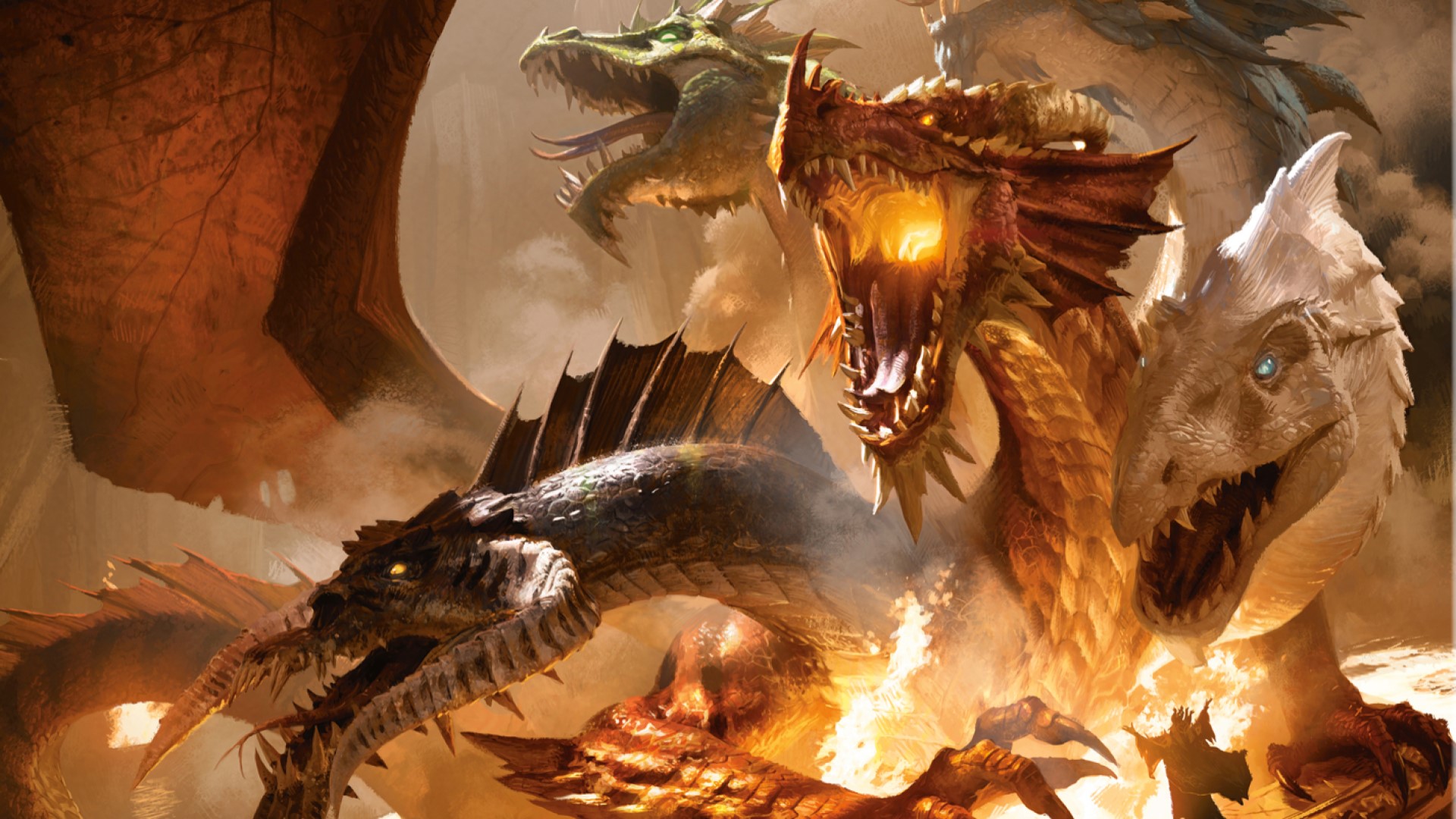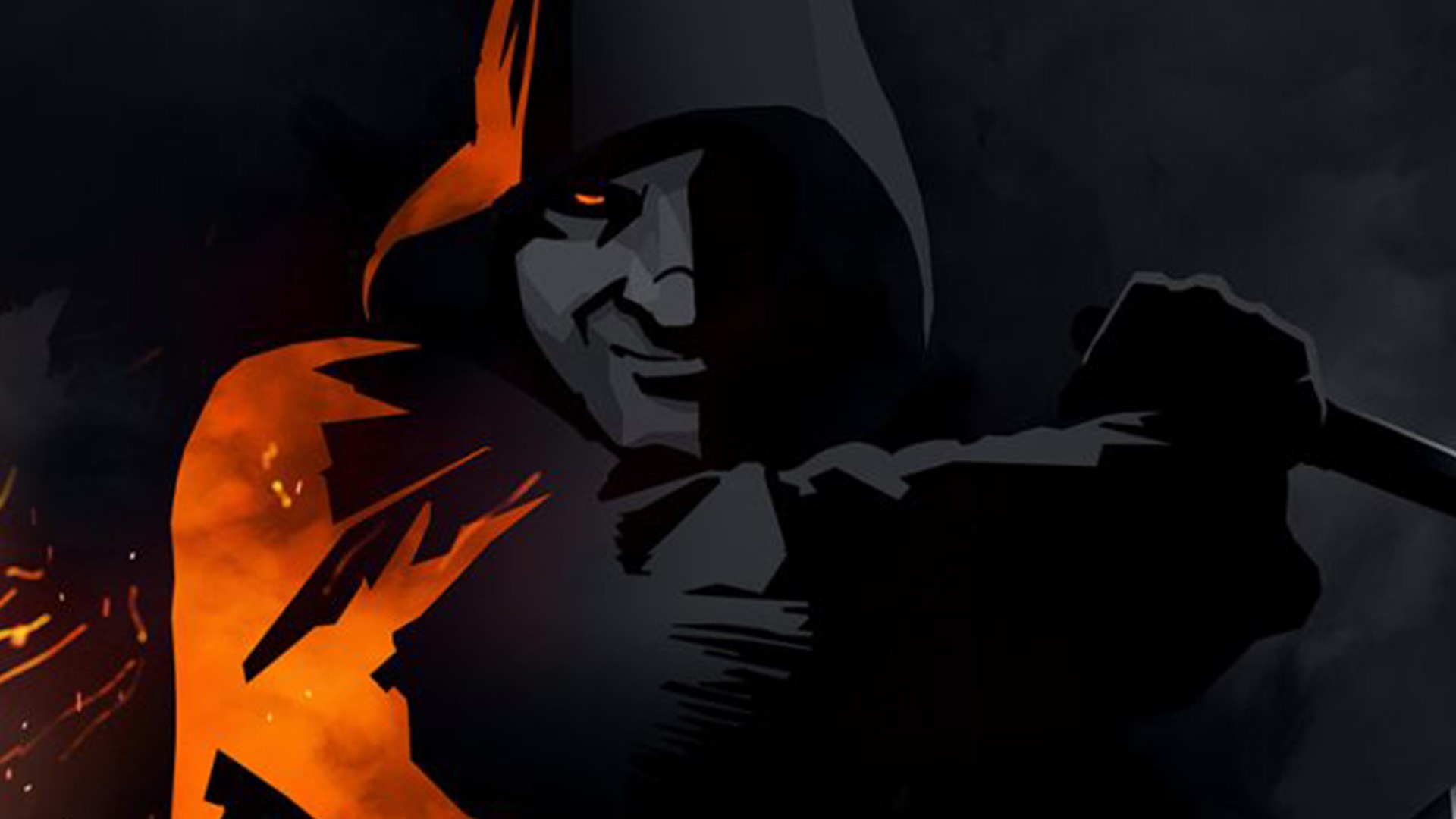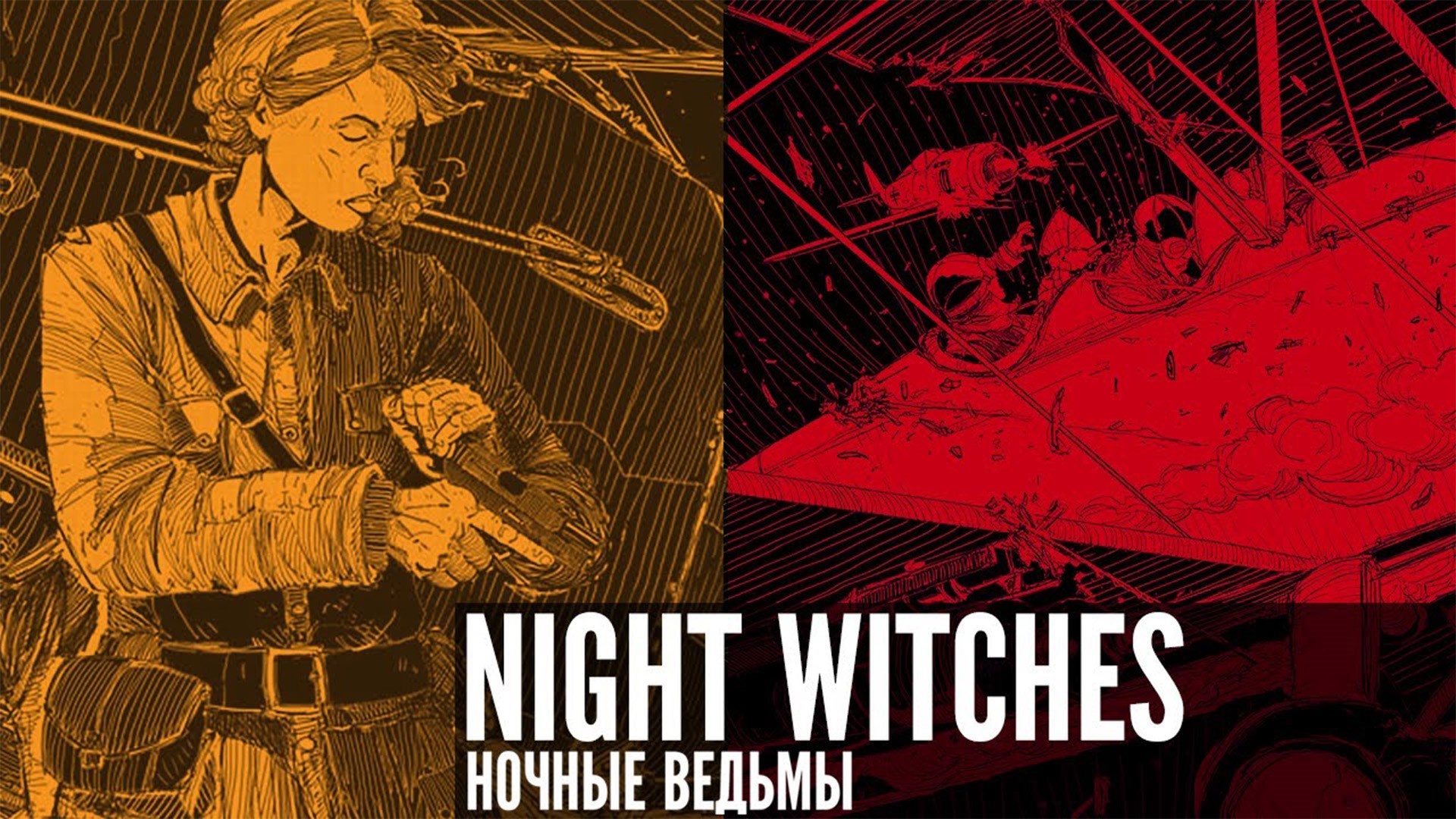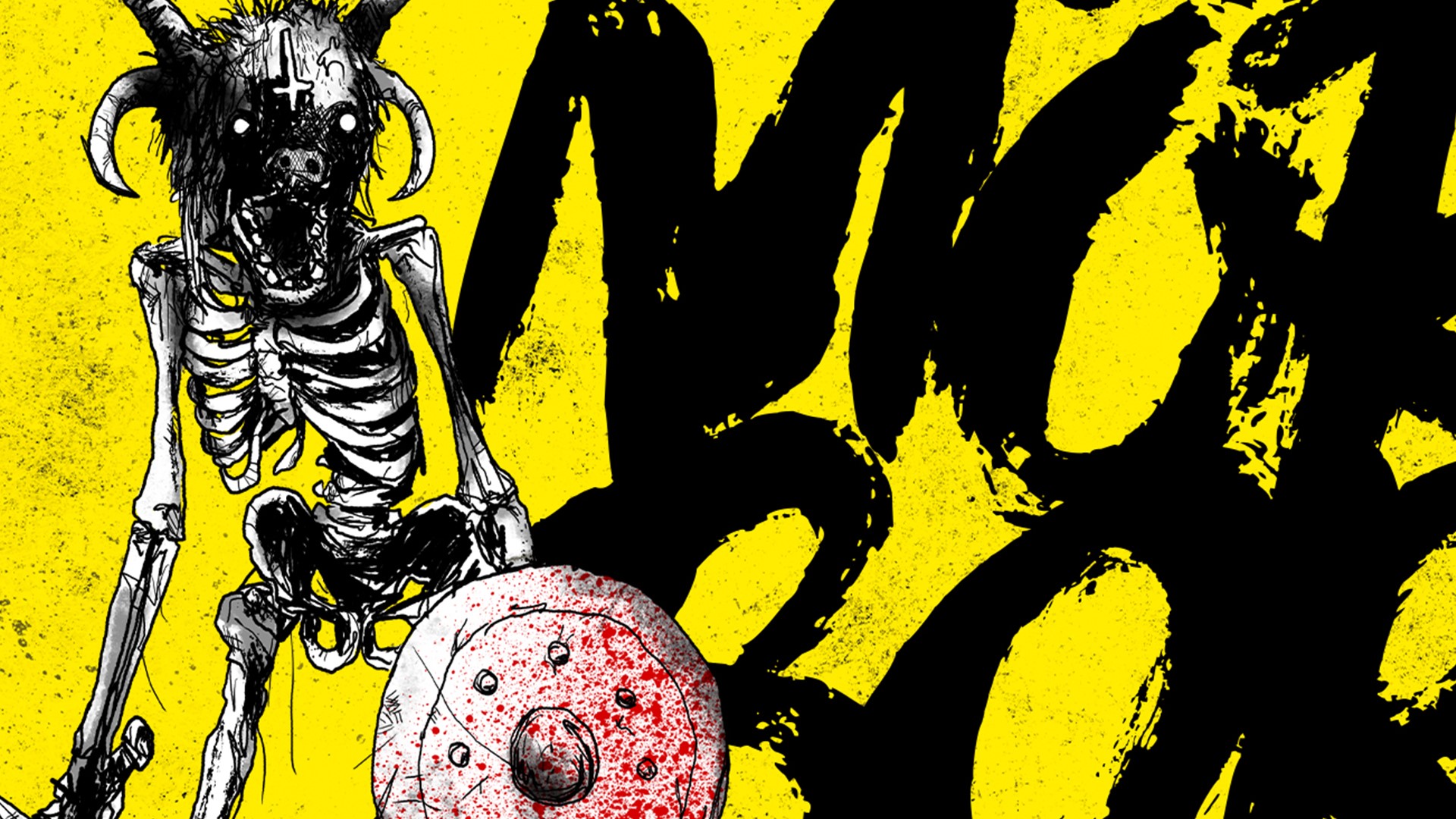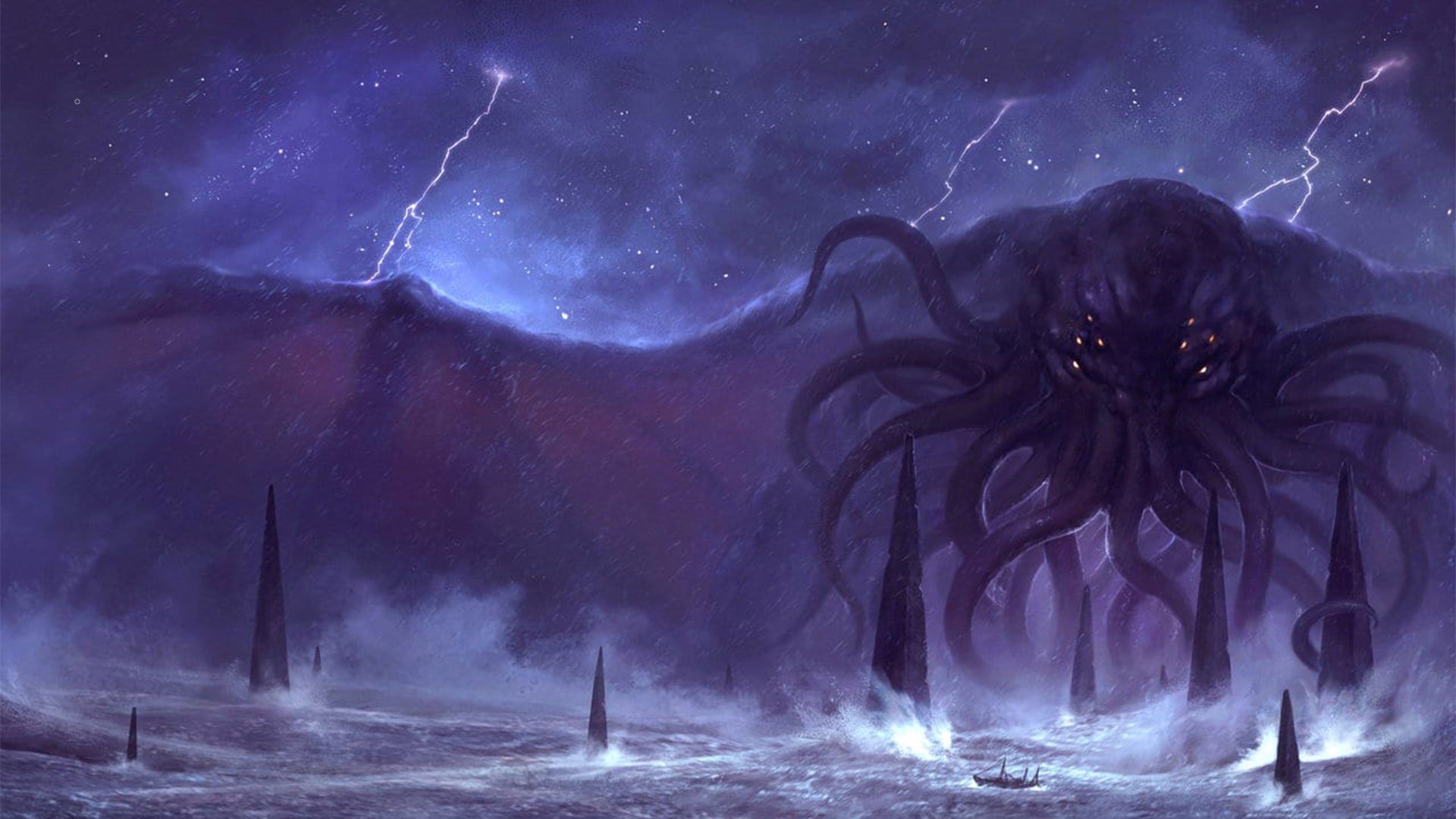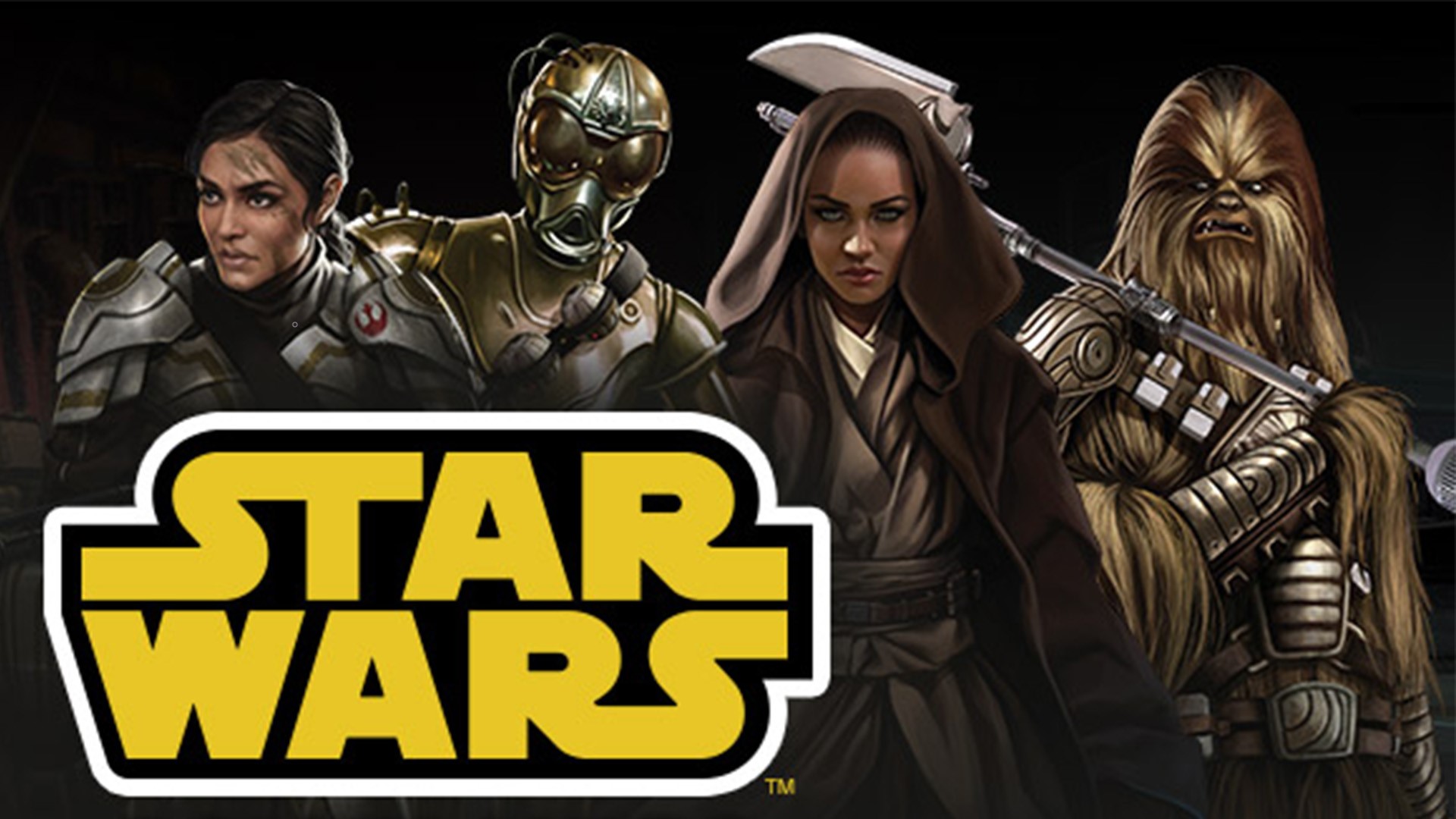What are the best tabletop roleplaying games? This guide picks the top tabletop RPGs in every genre, and explains the kind of gameplay they provide, what’s special about the system, and what you should be aware of before you play.
Unsurprisingly, we’ve included Dungeons and Dragons in this list. Its DnD classes and DnD races are more iconic than any other TTRPG rules set. However, we don’t advocate for only playing D&D. There are heaps of varied tabletop RPGs out there, with different strengths and settings, and they’re equally as worthy of your attention.
The best tabletop RPGs are:
Dungeons and Dragons
The best TTRPG for beginners
Dungeons and Dragons specifications:
| Publication date |
2014 (new edition in 2024) |
| Publisher |
Wizards of the Coast |
Reasons to buy
- A wealth of pre-written material
- Strong all-rounder, mid-complexity rules
- Incredible community support
Reasons to avoid
- Still fairly complex to learn
- Treated as a ‘one size fits all’ when it isn’t
Dungeons and Dragons is the original tabletop RPG, with 50 years of experience under its belt. Combining strategy with some flashy magic and charismatic heroes, it remains the bread and butter of sword-and-sorcery fans searching for a fantasy-based RPG. While it started out with strategic wargaming roots, the latest edition is as much about storytelling as it is power-building.
Its rules are of middling complexity, as far as RPG systems go. You build a character using classes, races, feats, and spells, and you use their skills (and a trusty d20) to navigate combat and exploration scenarios. It’s complex enough that you can dive very deep into its mechanics, but the core gameplay is simple enough that new players can get by without having read the 2024 Player’s Handbook cover to cover.
D&D clearly has some staying power, but it’s actually quite controversial to recommend it as a beginner-friendly TTRPG. That’s because learning how to play Dungeons and Dragons can be pretty intimidating without a guide to point out the essentials. Plus, the RPG has its rough edges, with rules that aren’t always as clear or easy to find as they could be.
However, the sheer size of the community around the game means it’s still the best point of entry. No other RPG has so many community-made resources, and helpful explainer videos. Not to mention the sheer number of players out there – if you want to find a group to join, DnD is absolutely your best shot.
If you are looking to get into tabletop RPGs for the first time – or a budding Game/Dungeon Master, keen to make your first homebrew campaign in a flexible environment where inspiration, tried-and-tested structures, and ready-made assets are all plentiful, D&D is a superb place to start.
Although long-time players may be itching for more stringent rules, there is no denying Dungeons and Dragons 5e’s mass appeal. With faster combat, increased immersion, and more space for imaginative storytelling, it’s understandable why this edition is the most-played version of D&D to date.
Blades in The Dark
The best crime tabletop RPG.
Blades in The Dark specifications:
| Publication date |
2017 |
| Publisher |
Evil Hat Productions |
Reasons to buy
- Unique setting
- Excellent heist mechanics
Blades in The Dark is a twisted 19th-century heist game where players take on the role of scoundrels, looking to complete ‘scores’ with their crew. Set in the fictional gothic, industrial city of Doskvol, the RPG launches you into an exciting crime-caper gameplay style, having you face off with rival crews while avoiding the law.
At the same time, you must try to survive volatile Victorian back alleys, where ghosts roam, and lowlife citizens are ready to stab you in the back. But despite its exciting setting and enjoyable heist movie tropes, what truly makes the game so successful is its fast, easy-to-pick-up game mechanics and unique character choices.
From its ‘flashback’ system to the option to play as a ghost after a character’s death, Blades in The Dark constantly rewards you for inventive roleplay and imaginative thinking, while requiring little setup preparation. Working for both one-shots and lengthy campaigns, this RPG will suit those seeking to get stuck into a detailed story, with minimal prep time.
Night Witches
The best historical tabletop RPG.
Night Witches specifications:
| Publication date |
2015 |
| Publisher |
Bully Pulpit Games |
Reasons to buy
- Balances combat and storytelling
- Fresh take on WW2 games
Reasons to avoid
- Asks you to do a lot of homework
In Night Witches, you and your friends will play as pilots in the Soviets’ famed all-woman air force, bombing Nazis during the night and navigating the politics and relationships of the male-dominated Red Army by day. Creator Jason Morningstar (the designer behind popular card-driven storytelling game Fiasco) has splashed a heavy mix of history and combative tension into this WWII tabletop RPG.
The game has two distinctive modes built into its night-and-day cycle. At night, you engage in deadly aerial combat, making strategic decisions as a team to complete missions in your two-person aircraft. During the day, you are a roleplaying master, avoiding NKVD interrogation and getting ready for the next night’s combat sorties.
Night Witches makes it easy to figure out if you prefer combat-heavy or narrative-focused RPGs, since it ably simulates both styles – letting your group discover what kind of roleplayers they truly are, all while enjoying the game’s strikingly well-done war story.
13th Age
The best fantasy tabletop RPG
13th Age specifications:
| Publication date |
2013 (second edition due in 2025) |
| Publisher |
Pelgrane Press |
Reasons to buy
- Balances narrative and combat well
- Full of unique ideas
Reasons to avoid
- You might want to wait for the new edition
- Some interesting rules aren’t explained well
13th Age is like a version of Dungeons and Dragons from a parallel universe. It was created by two former D&D lead designers, Jonathan Tweet (the lead author for D&nD 3rd edition) and Rob Heinsoo (a lead designer on D&D 4th edition), to use for their home game. It hits all the same notes as D&D, but the way it plays them is much more interesting.
The core of the game is a recognizable, D20-based fantasy RPG, with a party of heroes from a variety of fantasy races and classes venturing into the unknown in search of adventure. Every character has “one unique thing”, a fact that makes them stand out from everyone else in the world. It doesn’t have to be big and powerful – you might just be the best Dwarven chef in the world – but it is something that the bards will sing about your character once they’re famous.
Combat is snappy, thanks in part to the “escalation die”, a D6 that ticks up every round of combat and provides all of the players a bonus to hit – as well as unlocking more potent abilities as the fight goes on.
13th Age comes with a default fantasy world known as the Dragon Empire. This is intentionally underdeveloped so that every party can make it their own. Rather than gods, the most notable beings in the world are the Icons, powerful and archetypical entities like the Archdruid, the Liche King, and the Protector.
Each character has a narrative connection to one or two of these Icons, which will generate complications and benefits for the party throughout the adventure. Picking which Icons you want to be connected to, and how, is a great way to signal to the GM what kind of game you want to be part of!
The second edition of 13th Age is due in 2025. While this will replace the core rulebook, the new version is essentially just a rebalanced version of the original, and all the supplements will be fully compatible.
Warhammer 40k: Imperium Maledictum
The best grimdark tabletop RPG
Warhammer 40k: Imperium Maledictum specifications:
| Publication date |
2023 |
| Publisher |
Cubicle 7 |
Reasons to buy
- Great combat and investigation rules
- Interesting ‘patron’ system
- Strong narrative and setting
Reasons to avoid
- Dense lore you need to know
- Not many supplements
Warhammer 40,000 roleplay: Imperium Maledictum is a fantastic and very recent roleplaying game set in the grimdark Warhammer 40k universe. A powerful Patron has gathered the player characters together, pulling them from lives of servitude within one of the Imperium of Man‘s colossal institutions to direct them to their own ends.
The Patron system is a very versatile roleplaying tool. While the game master can decide on a patron for the group, this can be a collaborative activity, letting the players set the tone for the campaign. A Patron from the Inquisition will see the players delve into heretical cults and forbidden tomes, while a Rogue Trader master might see the party shipping from world to world in pursuit of profit.
You even get to customise your Patron, picking a set of bonuses that you can use in your adventures – perhaps they can lend you a squad of shock troopers as back up in fire fights, or maybe their deep ties with the Adeptus Administratum will allow you to descend on a ‘legitimate’ business with a team of auditors. But the more benefits you pick, the more secret flaws the game master will give them as well.
The game uses a D100 system and handles investigation, social scenes, and combat remarkably well, and even manages to mesh them together. The more you can uncover about an enemy before you engage them in combat, the more ‘superiority’ you will accrue, which turns into a flat bonus on every roll once combat starts. This ensures that parties with more bookworms than bruisers aren’t disadvantaged when the grox dung hits the fan.
40k lore can be intimidatingly deep, but the core rulebook does an excellent job introducing the setting as a whole – you don’t need to have read all the Horus Heresy books to understand the game, as a player or as a GM. The self-contained Macarian sub-sector of the Imperium is vividly described, and full of ready-to-use adventure hooks for GMs.
The best simple tabletop RPG
Mörk Borg specifications:
| Publication date |
2020 |
| Publisher |
Free League Publishing |
Reasons to buy
- Stunning visual design
- Dark, goofy fun
- Simple, brutal rules
Reasons to avoid
- Can be overly simplistic
- Very minimal setting
Let’s make one thing clear: you’re going to die. A self-described doom metal album of a game, Mörk Borg ain’t for the faint of heart – in its apocalyptic world, the rules are light and the consequences for simply existing are heavy.
Created by a couple of ingenious, deeply disturbed Swedes named Pelle Nilsson and Johan Nohr, Mörk Borg is filled with serpent-worshipping cultists, insidious cannibals and deadly miseries. GMs roll daily to determine if a horrifying prophecy will be fulfilled, and once seven have occurred it’s game over.
If you’re thinking this sounds like the bleak, macabre, occult energy of a scandi horror flick, in RPG form, you aren’t far off. With its dark aesthetics, medieval nordic setting and headbanging character classes like ‘heretical priest’, it’s pretty much guaranteed that if you’re a fan of heavy metal music, you’re going to be a fan of Mörk Borg.
It’s an RPG trimmed of all the fat, hyper-focusing on core elements that make tabletop roleplaying fun. Combat is fast, and players only have four stats, with no throwaway abilities cluttering up their sheets. Anyone can use magic via sacred scrolls, and the game’s rules are loose enough to encourage freewheeling and hilarious roleplay.
Call of Cthulhu
The original (and still the best) Lovecraft tabletop RPG.
Call of Cthulhu specifications:
| Publication date |
2014 |
| Publisher |
Chaosium |
Reasons to buy
- Great setting for history fans
- Excellent horror mystery vibes
Reasons to avoid
- Limited genre and scope
- Gameplay can get same-y
A cosmic horror and investigative saga that will almost certainly end in your character going insane, Call of Cthulhu is one of the most well-known and beloved tabletop RPGs on the market. Originally published by Chaosium in 1981, and with its seventh edition arriving in 2014, the game takes place in the world of H.P. Lovecraft’s endlessly popular cosmic horror novels, and turns players into investigators, traveling through a 1920s setting full of paranormal and mind-bending mysteries.
If you like great battle-axe-wielding characters and solving your RPG challenges via brawny combat, Call of Cthulhu probably isn’t going to be your cup of tea. Playing as a squishy investigator, you won’t so much be fighting hulking monsters, as engaging in a battle of wits with them, rolling desperate, quick-thinking skill checks to escape their clutches. The rules can get detailed, but Call of Cthulhu is a must-play for horror fans.
It’s also worth noting that even if you don’t succumb to Lovecraftian madness, you will probably die nonetheless, making it the perfect game for one-shots, or groups who love getting to grips with an RPG’s rules through multiple playthroughs – and don’t mind rolling up multiple new eccentric turn-of-the-century weirdos over the course of a campaign, to replace the characters lost to the Great Old Ones’ machinations.
Star Wars Roleplaying Game
The best science fiction RPG
Star Wars Roleplaying Game specifications:
| Publication date |
2012 |
| Publisher |
Fantasy Flight Games |
Reasons to buy
- Detailed recreation of an iconic setting
- All games in the series are compatible
Reasons to avoid
- Mainly for Star Wars fans
The Star Wars Roleplaying Game has you step into a galaxy far far away, joining a crew of heroes traveling the (apparently incurably) war-torn galaxy that once belonged to George Lucas.
The game is broken up into three distinct modules: Age of Rebellion, Edge of the Empire and Force and Destiny. Age of Rebellion sees you taking up the insurrectionist cause, becoming a rebel fighter in their guerilla war against the Empire. Force and Destiny (if the name didn’t clue you in) treads the Jedi path, having your characters learn the way of the force. Finally, in Edge of the Empire, you take your cues from Han Solo or Boba Fett, smuggling, bounty hunting, and essentially swindling your way across the Outer Rim.
No matter which of these games you choose, they’re smoothly compatible with one another, as they all share the same core rules and mechanics, meaning you can easily cross over between the modules and engage with the ‘full experience’ – if your wallet can stretch to all three sourcebooks. The general game mechanics are simple, and perfectly capture the fast-moving, unrestrained gameplay you’d expect from a Star Wars RPG.
Pathfinder
The best complex tabletop RPG for veteran players.
Pathfinder specifications:
| Publication date |
2019 |
| Publisher |
Paizo |
Reasons to buy
- Exciting character options
- Similarities with D&D make learning easier
- Rich lore and setting
Reasons to avoid
- Extremely dense rules and lore
Pathfinder is a Paizo tabletop RPG that was originally a modified version of D&D 3.5e. However, in the years since the first edition, Pathfinder has grown into its own game with its own identity and dedicated fanbase.
Pathfinder is for gamers who love crunch, real crunch. It’s got heaps and heaps of Pathfinder classes, Pathfinder races, spells, and other player options – to the point where Pathfinder character sheets start to look a little stuffed.
This can be a little overwhelming at first, but the reams of rulebook eventually give you an enormous amount of freedom. The level of detail in every character, magic item, and adventure makes each level up more satisfying than the last.
Plus, Paizo is regularly putting out interesting setting books and adventure paths to help players explore the canon Pathfinder world, Golarion.
Ten Candles
The best horror tabletop RPG
Ten Candles specifications:
| Publication date |
2015 |
| Publisher |
Cavalry Games |
Reasons to buy
- Intensely atmospheric
- Collaborative storytelling
- Easy to learn
Reasons to avoid
- Not everyone enjoys horror
- No strategy to speak of
Cavalry Games’ Ten Candles is, hands-down, one of the most atmospheric games we’ve ever played. A one-shot-only game, sessions take place in a dark room, with ten candles providing the only source of light.
At least, that’s how the game starts. The candles aren’t just there to set the mood; they’re a core part of the RPG’s mechanics. Players have a communal pool of d6s they must roll any time they face a conflict. If the roll fails, a candle goes out. When the party are down to their final candle, the group must narrate how they die. They can choose to burn the paper they’ve written parts of their character on to improve their chances, but Ten Candles only ever ends one way: darkness and death.
Storytelling comes before everything in Ten Candles. The rules are very light, and the Game Master doesn’t have sole control of the narrative. They’ll often be rolling against the players, with the winner getting to narrate the outcome of a roll.
If you’ve only ever played games like D&D, Ten Candles can be a little jarring at first. The social contract between DM and players is totally different, and there’s no real way to ‘win’ a scenario or build a powerful character. However, if you love telling a good (but grim) tale, you can’t do better than Ten Candles.
How we picked the best tabletop RPGs
Everyone on Team wargamer plays RPGs regularly, with senior guides writer Mollie Russell the undisputed queen – in an average week she runs one game and plays in two more. This guide represents the opinions of the whole team, with a mixture of our personal favorites, and games that we rate highly as professional game reviewers.
We’ve aimed to cover a broad base of the most popular RPG themes and play styles. Rest assured that if your favorite game isn’t on this list, it’s most likely because something else has pushed it out of the running, or because – as humans with finite time – we haven’t been able to give it enough time to consider it properly.
What is the most popular tabletop RPG?
Dungeons and Dragons is the most popular tabletop RPG. In July 2023, YouTube channel Roll For Combat used information from US mainstream book sellers and worked out that Wizards of the Coast had sold 1.6 million DnD Player’s Handbooks in the US alone.
That doesn’t include sales in the entire rest of the world, through friendly local game stores, via Amazon. And of course a whole year has passed since then!
Why is DnD the most popular tabletop RPG?
DnD was the first true tabletop RPG, published in 1974, and to most of the world its name is synonymous with roleplaying as a whole. Many fantastic creative works have been created throughout DnD’s lifespan, giving it immense cultural resonance with generations of gamers.
The current version of DnD, Dungeons and Dragons, is a relatively accessible version of the game. Plenty of thought has one in to providing newcomers with a good experience. It has also benefitted from lots of publicity, with actual-play shows like Dimension 20 and Critical Role, and animated adaptations like The Legend of Vox Machina Season 3, introducing it to huge audiences.
The network effect is also very important for DnD’s success. DnD is the most-played tabletop RPG, so it’s also the easiest RPG to find players for. That’s one reason we recommend it for beginners – there’s no better way to begin than finding a group to play with.
What is the best alternative to DnD?
If you want to play a game that’s similar to DnD, but less middle of the road, we have several suggestions.
- Pathfinder is an evolution of DnD 3rd edition that is more granular, crunchy, and tactical than DnD 5e, and has a huge library of supplements.
- 13th Age is like a parallel universe version of DnD 5e that is better for heroic action, with snappier combat, more interesting and simpler character classes, and interesting systems that tie player characters deeper into the narrative.
- Mörk Borg is a lightweight, indie dungeon crawler with immaculate vibes, old-skool sensibilities, and a truly vibrant scene for community content.
Looking for more game night ideas? Why not check out the best board games in the hobby space right now. We can also recommend the best trading card games for fans of Magic: The Gathering.
Source: Wargamer



